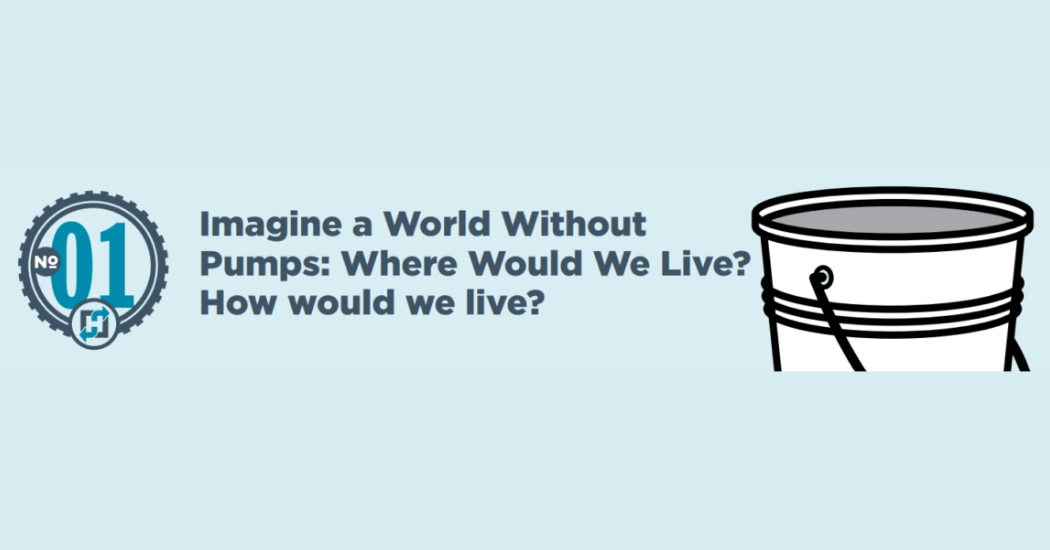At the recent HI Conference, the general session keynote speaker, Curt Steinhorst, highlighted data which details general workforce challenges manufacturers are facing. He stated that 50 million people quit their jobs in 2022, in July of 2023 there were 9.6 million job openings without sufficient people looking to fill the roles and 51% of currently employed people were looking for new jobs. This data is not surprising to most employers that are looking to grow their business, retain employees or hire new employees.
So, the question that needs to be asked is how do we attract and retain employees without limited resources?
The pump and fluid handling industry are not immune to these challenges, so the leadership of the Hydraulic Institute and Pump Systems Matter have aligned focus of strategic direction to (1) publicize the vital an important role of pumps in society and attracting talent to the industry, (2) develop standardized introductory and fundamental training, and (3) developing fundamental level certifications. These three initiatives provide companies focusing on the fluid handling industry with resources that they can use to attract, train, and certify employees in a standardized way.
It should not be understated that job seekers today are looking for organizations to provide a clear picture of why the industry and the position is important and provides a benefit to society. Also, job seekers are looking for a defined pathway for training and advancement, which the fundamental training and certification initiatives provide to employers. By adopting a standardized fundamental training and certification path, it not only provides clear direction to employees, but it also frees the employer to spend time developing and training their employees on their specific products and competitive advantages.
1) Resources are available that cover the importance, vital nature of, and the knowledge and careers within the pump industry.
The World Word Without Pumps (WWOP), Pump Pros Know, and Pump PROfiles campaigns each highlights the vital importance of pumps, important industry skills and rewarding careers within the industry respectively. The WWOP campaign highlights that our modern amenities and way of life would not exist without pumps. A non-exhaustive list, but to name a few, food processing, medicine, electricity, transportation, water treatment and distribution, and modern manufacturing, the way we know it today, would not be possible without pumps. One anecdote to think about is where we would be living if we did not have pumps?
 Certainly, without pumps we would be living close to fresh water, in single story homes, and not in the modern cities we have today, and as the first WWOP campaign indicated, in a world without pumps, the bucket is the most valuable household tool. The key takeaway here is that you can affirm to job seekers the importance of the industry, value to society they are providing by working in the industry, and assurance that the skills and knowledge they develop will be in demand as long as we have modern society.
Certainly, without pumps we would be living close to fresh water, in single story homes, and not in the modern cities we have today, and as the first WWOP campaign indicated, in a world without pumps, the bucket is the most valuable household tool. The key takeaway here is that you can affirm to job seekers the importance of the industry, value to society they are providing by working in the industry, and assurance that the skills and knowledge they develop will be in demand as long as we have modern society.
2) The next set of resources supporting the fluid handling industry are being launched today. The Hydraulic Institute and Pump Systems Matter are announcing the launch of the Introduction to Pump Fundamentals Training, and the Pump and Systems Fundamentals Training. Available at training.pumps.org, these on-demand training resources have been designed to provide convenient methods for learning, which can be easily adopted and integrated into companywide onboarding and training programs.
Free to all the employees of Hydraulic Institute Members, and Standards and Training Partners, the Introduction to Pump Fundamentals Training is delivered on a modern platform and includes videos with 3D images and animations to improve the learning experience. The content is broken out into six easily digestible 10-minute modules that cover pumps, drivers, fluid properties, system and pump curves, basic operating theory, and pump selection and data. Following completion of each module there are integrated quizzes that ensure the attendee knows the common industry language, pump types, components and the basics of operation and selection. These topics were picked, and training developed at the introductory level so that it is beneficial for everyone entering or with interest in the fluid handling industry.

Image 1 – Introduction to Pump Fundamentals Training
For technical, sales and customer facing employees the Pump and Systems Fundamentals Training is the next step. This includes 13 topics at the fundamental level training, with each topic lasting about 1 hour. Presented in a convenient on-demand format, each training topic is broken down into short modules with integrated quizzes to ensure understanding. The training topics can be taken individually as needed or as a full bundle. The full list of topics is provided in the image below, showing the comprehensive coverage. Following completion, the attendee will have the core knowledge related to pump and system design so that they can evaluate application considerations and provide solutions.

Image 2 – Pump and System Fundamentals Training
3) Coming in 2024 are the final pieces of the workforce development initiative, which will be two levels of fundamental pump and system certification. The program guidelines for both certifications are nearly complete, which outline the body of knowledge and certification requirements. In early 2024 the certification committees will begin the examination development process with a goal of launching the level 1 certification exam in the summer of 2024, with the level 2 certification exam following later in 2024.
Level 1 – A Level 1 certification indicates that an individual understands the purpose, function, and operating characteristics of positive displacement and rotodynamic pumps and systems. Level 1 certified individuals should have the fundamental knowledge of basic pump industry calculations and tools, different fluid properties and be able to analyze their interactions with equipment and a system to make informed pump hydraulic selections. The candidate should be able to collaborate with professionals to identify equipment type, acceptable pump performance, installation and operational issues, and energy optimization opportunities.
Level 2 – A Level 2 certification indicates that an individual has applied knowledge of the purpose, function, and operating characteristics of positive displacement and rotodynamic pumps and systems. Level 2 has a strong understanding of pump industry best practices, calculations, and tools to solve common pump and system operating issues. The candidate should be able to diagnose equipment, acceptable pump performance, installation, and operational issues, and identify energy optimization opportunities.
These certifications provide a standardized path for employees new to the industry, and individuals can leverage the fundamental training offerings to prepare. The fundamental nature of these certifications compliments the more specialized Pump System Assessment Professional certification that is already in place and any other future job specific or specialized certifications that are developed.
Attracting employees, developing them efficiently, transferring institutional knowledge from an aging workforce, and providing them with a vision of how they are serving the greater good is essential to address the current workforce challenge. This workforce challenge and the need for resources to address it is only growing as the baby boomer generation, which makes up 16% of the current workforce, continue to retire and take their institutional knowledge and experience with them.





Comments